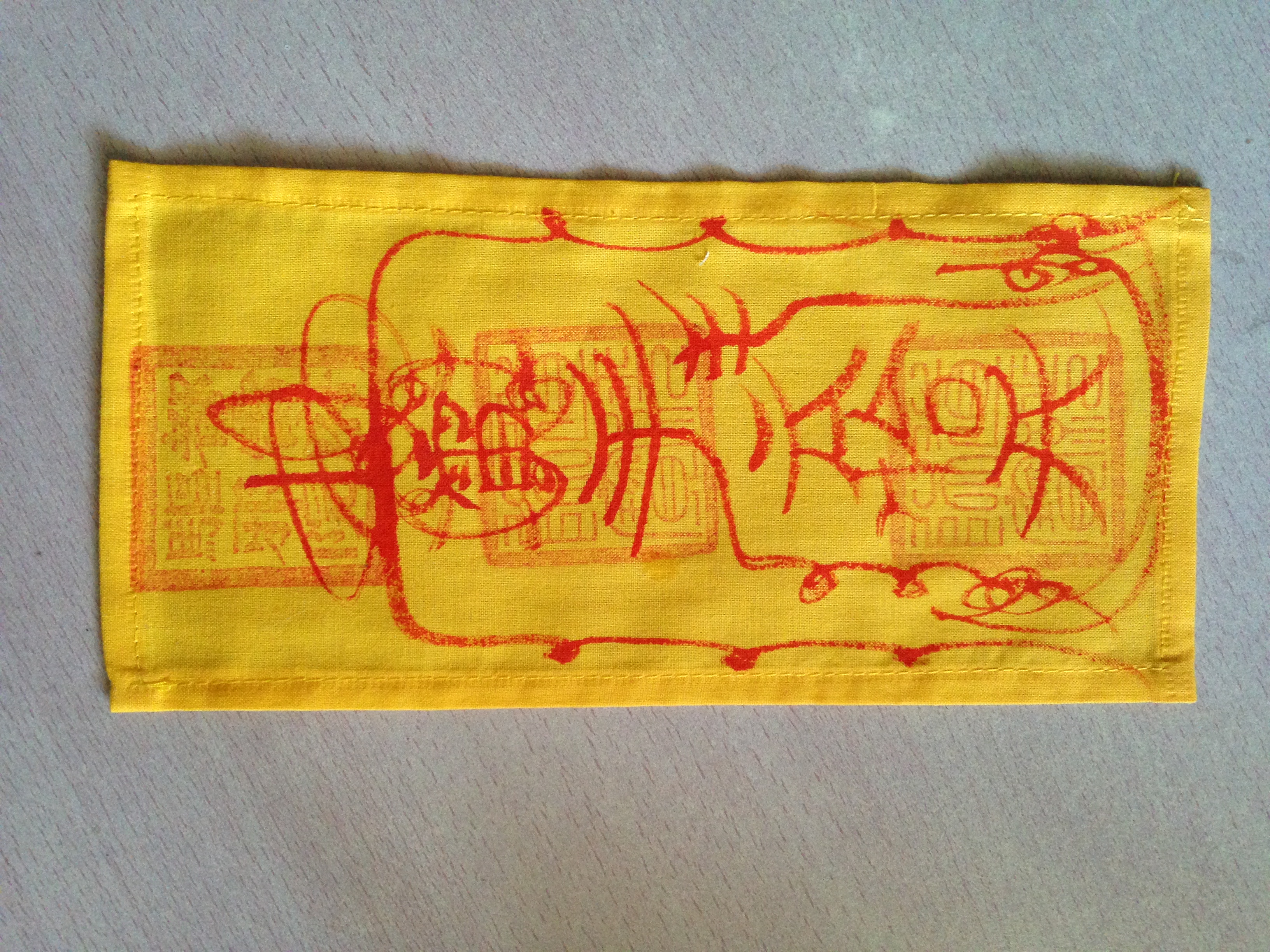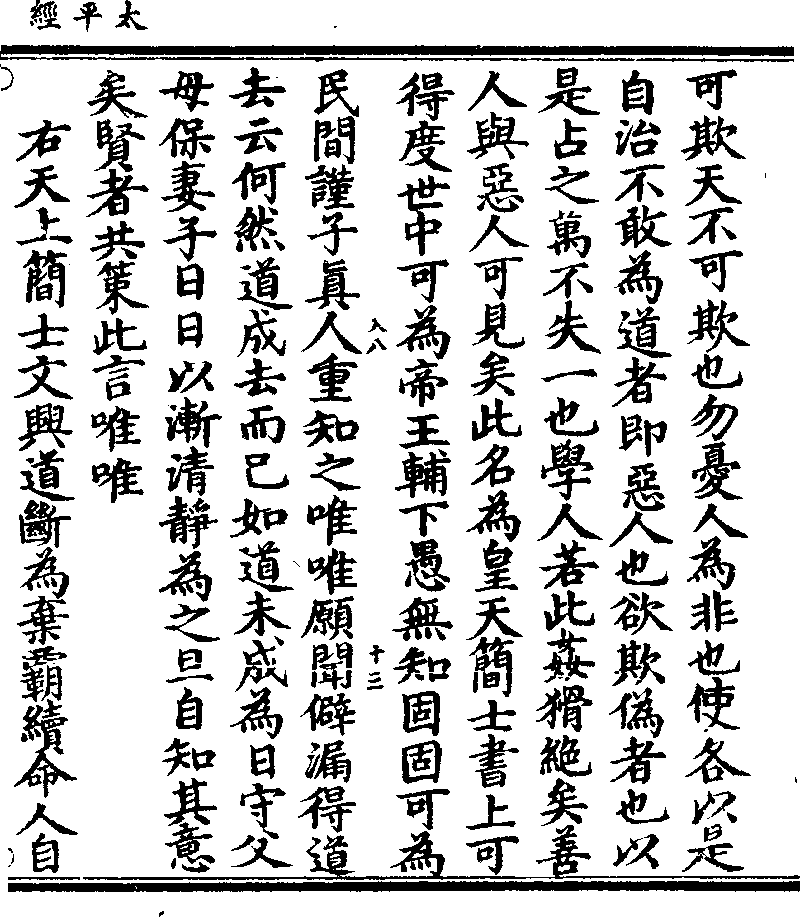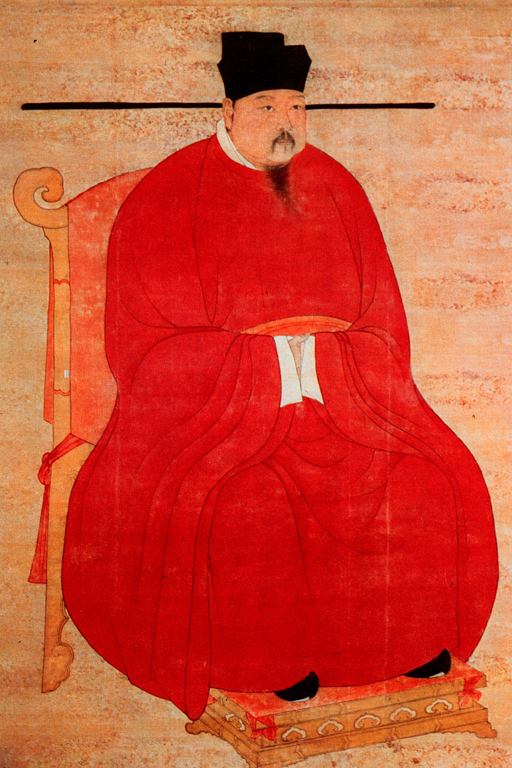|
Taoist Canon
Daozang (), meaning 'Taoist Canon', consists of around 1,400 texts that were collected (after the '' Daodejing'' and '' Zhuangzi'' and Liezi which are the core Taoist texts). They were collected by Taoist monks of the period in an attempt to bring together all of the teachings of Taoism, including all the commentaries and expositions of the various masters from the original teachings found in the ''Daodejing'' and ''Zhuangzi''. These three divisions were based on the main focus of Taoism in Southern China during the time it was made, namely; meditation, ritual, and exorcism. These Three Grottoes were used as levels for the initiation of Taoist masters, from lowest (exorcism) to highest (meditation). As well as the Three Grottoes there were Four Supplements that were added to the canon c. 500. These were mainly taken from older core Taoist texts (e.g. ''Daodejing'') apart from one which was taken from an already established and separate philosophy known as Tianshi Dao (Way of ... [...More Info...] [...Related Items...] OR: [Wikipedia] [Google] [Baidu] |
Taoism
Taoism (, ) or Daoism () refers to either a school of philosophical thought (道家; ''daojia'') or to a religion (道教; ''daojiao''), both of which share ideas and concepts of Chinese origin and emphasize living in harmony with the '' Tao'' (, 'Thoroughfare'); the ''Tao'' is generally defined as the source of everything and the ultimate principle underlying reality. The '' Tao Te Ching'', a book containing teachings attributed to Laozi (), together with the later writings of Zhuangzi, are both widely considered the keystone works of Taoism. Taoism teaches about the various disciplines for achieving perfection through self-cultivation. This can be done through the use of Taoist techniques and by becoming one with the unplanned rhythms of the all, called "the way" or "Tao". Taoist ethics vary depending on the particular school, but in general tend to emphasize ''wu wei'' (action without intention), naturalness, simplicity, spontaneity and the Three Treasures: , compassio ... [...More Info...] [...Related Items...] OR: [Wikipedia] [Google] [Baidu] |
Fulu
(), is a term for Taoist incantations and magic symbols, written or painted as talisman or () by Taoist practitioners. These practitioners are also called () or the sect, an informal group made up of priests from different schools of Taoism. These charms and amulets are also not confined strictly to Taoism as they have been incorporated in to certain forms of Chinese Buddhism, and have descendants such as the of Japanese Buddhism and Shinto. Etymology * (), or () are instructions to deities and spirits, symbols for exorcism, and medicinal potion recipes or charms to assist with ailments. * () is a register of the membership of the priests, as well as the skills they are trained in. Other names for in English include Taoist magic writing, magic script characters, magic figures, magic formulas, secret talismanic writing, and talismanic characters. General design Fu symbols tend to have irregular strokes that resemble Traditional Chinese characters, often el ... [...More Info...] [...Related Items...] OR: [Wikipedia] [Google] [Baidu] |
Way Of The Celestial Masters
The Way of the Celestial Masters is a Chinese Daoist movement that was founded by Zhang Daoling in 142 AD. Its followers rebelled against the Han Dynasty, and won their independence in 194. At its height, the movement controlled a theocratic state in what is now Sichuan. History Way of the Five Pecks of Rice In 142 CE, Zhang Daoling announced that Laozi had appeared to him, and commanded him to rid the world of decadence and establish a new state consisting only of the "chosen people". Zhang became the first Celestial Master, and began to spread his newly founded movement throughout the province of Sichuan. The movement was initially called the "Way of the Five Pecks of Rice", because each person wishing to join was required to donate five pecks of rice. The movement spread rapidly, particularly under his son and grandson Zhang Lu.Hendrischke (2000), p. 140. Their rebellion against the Han dynasty is known as the Five Pecks of Rice Rebellion. After the success of the rebelli ... [...More Info...] [...Related Items...] OR: [Wikipedia] [Google] [Baidu] |
Zhengyi Dao
Zhengyi Dao (), also known as the Way of Orthodox Unity, Teaching of the Orthodox Unity, and Branch of the Orthodox Unity is a Chinese Taoist movement that traditionally refers to the same Taoist lineage as the Way of the Five Pecks of Rice and Way of the Celestial Masters, but in the period of the Tang dynasty and its history thereafter. Like the Way of Celestial Masters (''Tianshi Dao''), the leader of Zhengyi Taoism was known as the Celestial Master. Name The term ''Zhengyi'' (Orthodox Unity) has been used since Taoism became an organized religion in 142 AD when Taishang Laojun bestowed the Covenant with the Powers of Orthodox Unity (''zhengyi mengwei'') on Zhang Daoling. Zhang's followers called his teachings the Way of the Five Pecks of Rice while during the Six Dynasties period, the Southern Taoists called it the Way of the Celestial Masters. The Covenant, Five Pecks of Rice, and Celestial Masters all refer to the ''Zhengyi'' branch of Taoism but in different periods. H ... [...More Info...] [...Related Items...] OR: [Wikipedia] [Google] [Baidu] |
Chinese Alchemy
Chinese alchemy is an ancient Chinese scientific and technological approach to alchemy, a part of the larger tradition of Taoist / Daoist body-spirit cultivation developed from the traditional Chinese understanding of medicine and the body. According to original texts such as the Cantong qi, the body is understood as the focus of cosmological processes summarized in the five agents of change, or Wuxing, the observation and cultivation of which leads the practitioner into alignment and harmony with the Tao. Therefore, the traditional view in China is that alchemy focuses mainly on longevity and the purification of one's spirit, mind and body, providing, health, longevity and wisdom, through the practice of Qigong, wuxingheqidao. The consumption and use of various concoctions known as alchemical medicines or elixirs, each of which having different purposes but largely were concerned with immortality. ''Pao zhi'' (炮制;''Pao chi'') or Processing (Chinese materia medica) is ... [...More Info...] [...Related Items...] OR: [Wikipedia] [Google] [Baidu] |
Taipingjing
''Taipingjing'' ("Scriptures of the Great Peace") is the name of several different Taoist texts. At least two works were known by this title: :*, 12 Chapters, contents unknown, author: Gan Zhongke :*, 170 Chapters, only 57 of which survive via the Taoist Canon, author: unknown ''Taipingjing'' usually refers to the work which has been preserved in the Taoist Canon. It is considered to be a valuable resource for researching early Taoist beliefs and the society at the end of the Eastern Han dynasty. Zhang Jue (d. 184), the leader of the Yellow Turban Rebellion, taught "Taiping Taoism" () based on this work. The contents of the ''Taipingjing'' are diverse but it primarily deals with subjects such as heaven and earth, the five elements, yin and yang and the sexagenary cycle. Fundamental concepts in the ''Taipingjing'' The ''Taipingjing'' is a guide that reveals the proper methods to bring forward an era of great peace or equality – the "Great Peace" -, an idea that proba ... [...More Info...] [...Related Items...] OR: [Wikipedia] [Google] [Baidu] |
Dao De Jing
The ''Tao Te Ching'' (, ; ) is a Chinese classic text written around 400 BC and traditionally credited to the sage Laozi, though the text's authorship, date of composition and date of compilation are debated. The oldest excavated portion dates back to the late 4th century BC, but modern scholarship dates other parts of the text as having been written—or at least compiled—later than the earliest portions of the '' Zhuangzi''. The ''Tao Te Ching'', along with the ''Zhuangzi'', is a fundamental text for both philosophical and religious Taoism. It also strongly influenced other schools of Chinese philosophy and religion, including Legalism, Confucianism, and Chinese Buddhism, which was largely interpreted through the use of Taoist words and concepts when it was originally introduced to China. Many artists, including poets, painters, calligraphers, and gardeners, have used the ''Tao Te Ching'' as a source of inspiration. Its influence has spread widely out and it is one of ... [...More Info...] [...Related Items...] OR: [Wikipedia] [Google] [Baidu] |
Hymn
A hymn is a type of song, and partially synonymous with devotional song, specifically written for the purpose of adoration or prayer, and typically addressed to a deity or deities, or to a prominent figure or personification. The word ''hymn'' derives from Greek (''hymnos''), which means "a song of praise". A writer of hymns is known as a hymnist. The singing or composition of hymns is called hymnody. Collections of hymns are known as hymnals or hymn books. Hymns may or may not include instrumental accompaniment. Although most familiar to speakers of English in the context of Christianity, hymns are also a fixture of other world religions, especially on the Indian subcontinent ('' stotras''). Hymns also survive from antiquity, especially from Egyptian and Greek cultures. Some of the oldest surviving examples of notated music are hymns with Greek texts. Origins Ancient Eastern hymns include the Egyptian '' Great Hymn to the Aten'', composed by Pharaoh Akhenaten; the Hu ... [...More Info...] [...Related Items...] OR: [Wikipedia] [Google] [Baidu] |
Faism
Chinese ritual mastery traditions, also referred to as ritual teachings (, sometimes rendered as "Faism"),Yu-chi Tsao, 2012. or Folk Taoism (), or also Red Taoism (mostly in east China and Taiwan), constitute a large group of Chinese orders of ritual officers who operate within the Chinese folk religion but outside the institutions of official Taoism.Pas, 2014. p. 259 The "masters of rites", the ''fashi'' (), are also known in east China as ''hongtou daoshi'' (), meaning "redhead" or "redhat" ''daoshi'' ("masters of the Tao"), contrasting with the ''wutou daoshi'' (), "blackhead" or "blackhat" priests, of Zhengyi Taoism who were historically ordained by the Celestial Master. Zhengyi Taoism and Faism are often grouped together under the category of "''daoshi'' and ''fashi'' ritual traditions" (). Although the two types of priests have the same roles in Chinese society—in that they can marry and they perform rituals for communities' temples or private homes—Zhengyi ''daoshi'' ... [...More Info...] [...Related Items...] OR: [Wikipedia] [Google] [Baidu] |
Yunji Qiqian
The ''Yunji qiqian'' is a (c. 1029) anthology of the (1016) Taoist Canon, which the Taoist scholar-official Zhang Junfang compiled for Emperor Zhenzong of Song. The ''Yunji qiqian'' records many early Taoist texts that have been lost since the 11th century, and is an important resource for understanding medieval Taoism. History The ''Yunji qiqian'' compendium was a "byproduct" of editing the 1016 edition ''Daozang'' "Taoist Canon" – the ''Da Song tiangong baozang'' "Great Song Celestial Palace Precious Canon". In 1012, the Northern Song Emperor Zhenzong (r. 997–1022) ordered the compilation of a revised and enlarged Canon. He put Chancellor Wang Qinruo in charge of the project, selected ten Taoist masters, and ordered Perfect Qi Guan to oversee the compilation of the ''Daozang''. In 1016, the scholar-official Zhang Junfang (961?–1042?), who had replaced Qi Guan, completed the revised ''Da Song tiangong baozang'' edition, which comprised 4,565 ''juan'' "scrolls; volumes" ... [...More Info...] [...Related Items...] OR: [Wikipedia] [Google] [Baidu] |
Daodejing
The ''Tao Te Ching'' (, ; ) is a Chinese classic text written around 400 BC and traditionally credited to the sage Laozi, though the text's authorship, date of composition and date of compilation are debated. The oldest excavated portion dates back to the late 4th century BC, but modern scholarship dates other parts of the text as having been written—or at least compiled—later than the earliest portions of the '' Zhuangzi''. The ''Tao Te Ching'', along with the ''Zhuangzi'', is a fundamental text for both philosophical and religious Taoism. It also strongly influenced other schools of Chinese philosophy and religion, including Legalism, Confucianism, and Chinese Buddhism, which was largely interpreted through the use of Taoist words and concepts when it was originally introduced to China. Many artists, including poets, painters, calligraphers, and gardeners, have used the ''Tao Te Ching'' as a source of inspiration. Its influence has spread widely out and it is one ... [...More Info...] [...Related Items...] OR: [Wikipedia] [Google] [Baidu] |
Laozi
Laozi (), also known by numerous other names, was a semilegendary ancient Chinese Taoist philosopher. Laozi ( zh, ) is a Chinese honorific, generally translated as "the Old Master". Traditional accounts say he was born as in the state of Chu in the 6th centuryBC during China's Spring and Autumn Period, served as the royal archivist for the Zhou court at Wangcheng (modern Luoyang), met and impressed Confucius on one occasion, and composed the ''Tao Te Ching'' before retiring into the western wilderness. Chinese folk religion considers he then became an immortal hermit or a god of the celestial bureaucracy under the name Laojun, one of the Three Pure Ones. A central figure in Chinese culture, Laozi is generally considered the founder of philosophical and religious Taoism. He was claimed and revered as the ancestor of the 7th10th century Tang dynasty and similarly honored by modern Chinese with the surname Li. His work had a profound influence on subsequent Chinese re ... [...More Info...] [...Related Items...] OR: [Wikipedia] [Google] [Baidu] |



.jpg)




.jpg)